Junkai Chen
SecureAgentBench: Benchmarking Secure Code Generation under Realistic Vulnerability Scenarios
Sep 26, 2025Abstract:Large language model (LLM) powered code agents are rapidly transforming software engineering by automating tasks such as testing, debugging, and repairing, yet the security risks of their generated code have become a critical concern. Existing benchmarks have offered valuable insights but remain insufficient: they often overlook the genuine context in which vulnerabilities were introduced or adopt narrow evaluation protocols that fail to capture either functional correctness or newly introduced vulnerabilities. We therefore introduce SecureAgentBench, a benchmark of 105 coding tasks designed to rigorously evaluate code agents' capabilities in secure code generation. Each task includes (i) realistic task settings that require multi-file edits in large repositories, (ii) aligned contexts based on real-world open-source vulnerabilities with precisely identified introduction points, and (iii) comprehensive evaluation that combines functionality testing, vulnerability checking through proof-of-concept exploits, and detection of newly introduced vulnerabilities using static analysis. We evaluate three representative agents (SWE-agent, OpenHands, and Aider) with three state-of-the-art LLMs (Claude 3.7 Sonnet, GPT-4.1, and DeepSeek-V3.1). Results show that (i) current agents struggle to produce secure code, as even the best-performing one, SWE-agent supported by DeepSeek-V3.1, achieves merely 15.2% correct-and-secure solutions, (ii) some agents produce functionally correct code but still introduce vulnerabilities, including new ones not previously recorded, and (iii) adding explicit security instructions for agents does not significantly improve secure coding, underscoring the need for further research. These findings establish SecureAgentBench as a rigorous benchmark for secure code generation and a step toward more reliable software development with LLMs.
R2Vul: Learning to Reason about Software Vulnerabilities with Reinforcement Learning and Structured Reasoning Distillation
Apr 07, 2025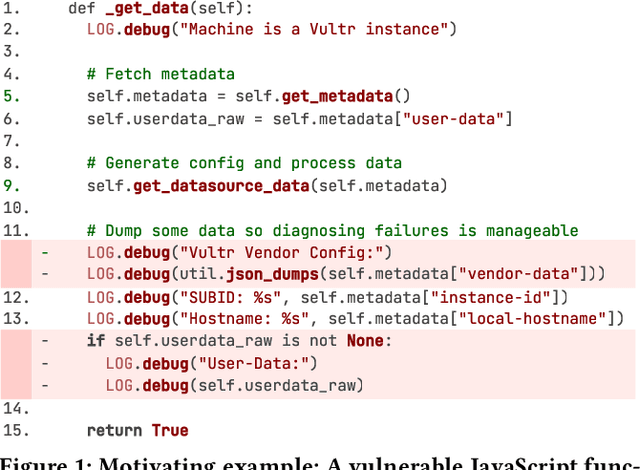
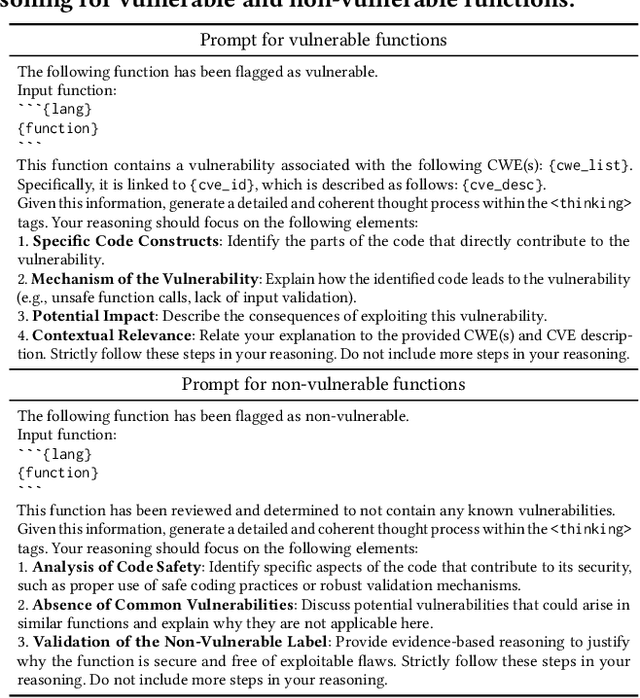
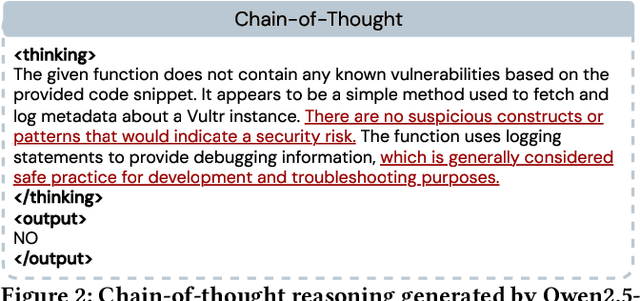
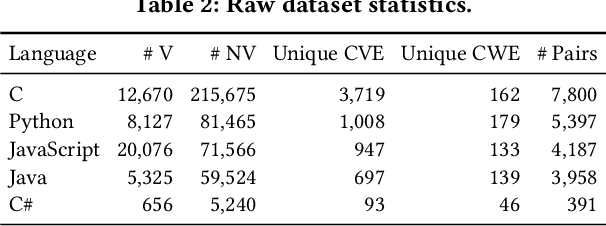
Abstract:Large language models (LLMs) have shown promising performance in software vulnerability detection (SVD), yet their reasoning capabilities remain unreliable. Existing approaches relying on chain-of-thought (CoT) struggle to provide relevant and actionable security assessments. Additionally, effective SVD requires not only generating coherent reasoning but also differentiating between well-founded and misleading yet plausible security assessments, an aspect overlooked in prior work. To this end, we introduce R2Vul, a novel approach that distills structured reasoning into small LLMs using reinforcement learning from AI feedback (RLAIF). Through RLAIF, R2Vul enables LLMs to produce structured, security-aware reasoning that is actionable and reliable while explicitly learning to distinguish valid assessments from misleading ones. We evaluate R2Vul across five languages against SAST tools, CoT, instruction tuning, and classification-based baselines. Our results show that R2Vul with structured reasoning distillation enables a 1.5B student LLM to rival larger models while improving generalization to out-of-distribution vulnerabilities. Beyond model improvements, we contribute a large-scale, multilingual preference dataset featuring structured reasoning to support future research in SVD.
SAFEERASER: Enhancing Safety in Multimodal Large Language Models through Multimodal Machine Unlearning
Feb 18, 2025Abstract:As Multimodal Large Language Models (MLLMs) develop, their potential security issues have become increasingly prominent. Machine Unlearning (MU), as an effective strategy for forgetting specific knowledge in training data, has been widely used in privacy protection. However, MU for safety in MLLM has yet to be fully explored. To address this issue, we propose SAFEERASER, a safety unlearning benchmark for MLLMs, consisting of 3,000 images and 28.8K VQA pairs. We comprehensively evaluate unlearning methods from two perspectives: forget quality and model utility. Our findings show that existing MU methods struggle to maintain model performance while implementing the forget operation and often suffer from over-forgetting. Hence, we introduce Prompt Decouple (PD) Loss to alleviate over-forgetting through decouple prompt during unlearning process. To quantitatively measure over-forgetting mitigated by PD Loss, we propose a new metric called Safe Answer Refusal Rate (SARR). Experimental results demonstrate that combining PD Loss with existing unlearning methods can effectively prevent over-forgetting and achieve a decrease of 79.5% in the SARR metric of LLaVA-7B and LLaVA-13B, while maintaining forget quality and model utility. Our code and dataset will be released upon acceptance. Warning: This paper contains examples of harmful language and images, and reader discretion is recommended.
Devils in Middle Layers of Large Vision-Language Models: Interpreting, Detecting and Mitigating Object Hallucinations via Attention Lens
Nov 23, 2024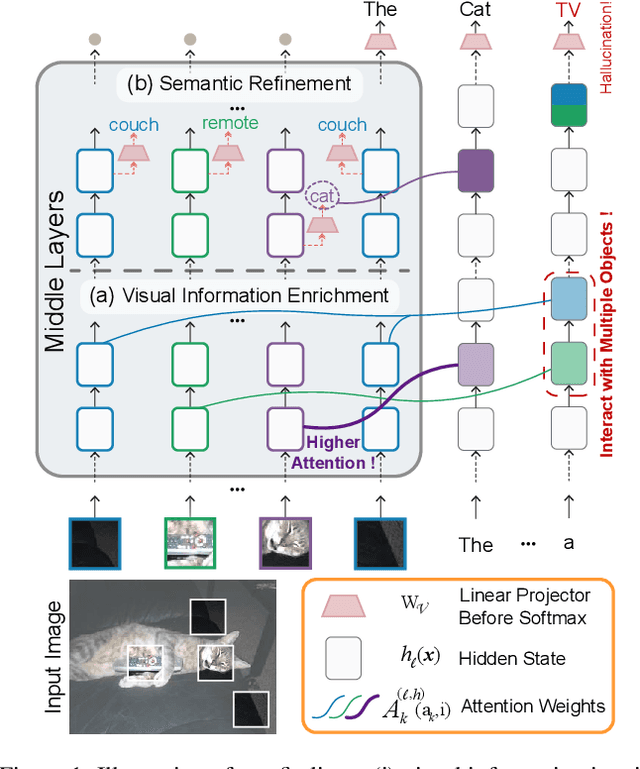

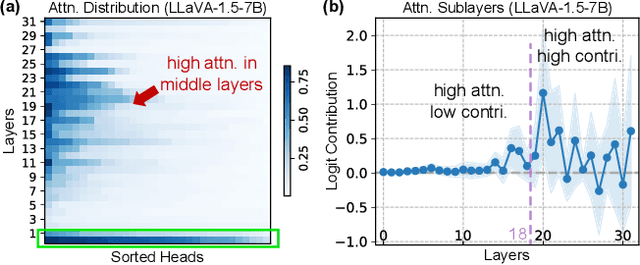

Abstract:Hallucinations in Large Vision-Language Models (LVLMs) significantly undermine their reliability, motivating researchers to explore the causes of hallucination. However, most studies primarily focus on the language aspect rather than the visual. In this paper, we address how LVLMs process visual information and whether this process causes hallucination. Firstly, we use the attention lens to identify the stages at which LVLMs handle visual data, discovering that the middle layers are crucial. Moreover, we find that these layers can be further divided into two stages: "visual information enrichment" and "semantic refinement" which respectively propagate visual data to object tokens and interpret it through text. By analyzing attention patterns during the visual information enrichment stage, we find that real tokens consistently receive higher attention weights than hallucinated ones, serving as a strong indicator of hallucination. Further examination of multi-head attention maps reveals that hallucination tokens often result from heads interacting with inconsistent objects. Based on these insights, we propose a simple inference-time method that adjusts visual attention by integrating information across various heads. Extensive experiments demonstrate that this approach effectively mitigates hallucinations in mainstream LVLMs without additional training costs.
Look Twice Before You Answer: Memory-Space Visual Retracing for Hallucination Mitigation in Multimodal Large Language Models
Oct 04, 2024
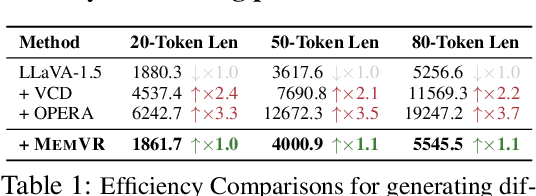
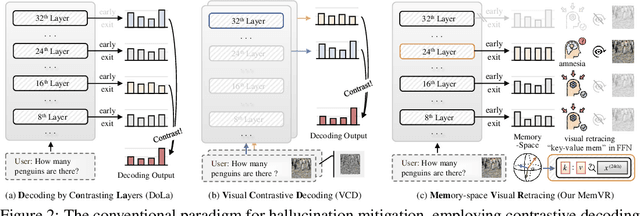

Abstract:Despite their impressive capabilities, Multimodal Large Language Models (MLLMs) are susceptible to hallucinations, especially assertively fabricating content not present in the visual inputs. To address the aforementioned challenge, we follow a common cognitive process - when one's initial memory of critical on-sight details fades, it is intuitive to look at them a second time to seek a factual and accurate answer. Therefore, we introduce Memory-space Visual Retracing (MemVR), a novel hallucination mitigation paradigm that without the need for external knowledge retrieval or additional fine-tuning. In particular, we treat visual prompts as supplementary evidence to be reinjected into MLLMs via Feed Forward Network (FFN) as key-value memory, when the model is uncertain or even amnesic about question-relevant visual memories. Comprehensive experimental evaluations demonstrate that MemVR significantly mitigates hallucination issues across various MLLMs and excels in general benchmarks without incurring added time overhead, thus emphasizing its potential for widespread applicability.
Reefknot: A Comprehensive Benchmark for Relation Hallucination Evaluation, Analysis and Mitigation in Multimodal Large Language Models
Aug 18, 2024



Abstract:Hallucination issues persistently plagued current multimodal large language models (MLLMs). While existing research primarily focuses on object-level or attribute-level hallucinations, sidelining the more sophisticated relation hallucinations that necessitate advanced reasoning abilities from MLLMs. Besides, recent benchmarks regarding relation hallucinations lack in-depth evaluation and effective mitigation. Moreover, their datasets are typically derived from a systematic annotation process, which could introduce inherent biases due to the predefined process. To handle the aforementioned challenges, we introduce Reefknot, a comprehensive benchmark specifically targeting relation hallucinations, consisting of over 20,000 samples derived from real-world scenarios. Specifically, we first provide a systematic definition of relation hallucinations, integrating perspectives from perceptive and cognitive domains. Furthermore, we construct the relation-based corpus utilizing the representative scene graph dataset Visual Genome (VG), from which semantic triplets follow real-world distributions. Our comparative evaluation across three distinct tasks revealed a substantial shortcoming in the capabilities of current MLLMs to mitigate relation hallucinations. Finally, we advance a novel confidence-based mitigation strategy tailored to tackle the relation hallucinations problem. Across three datasets, including Reefknot, we observed an average reduction of 9.75% in the hallucination rate. We believe our paper sheds valuable insights into achieving trustworthy multimodal intelligence. Our dataset and code will be released upon paper acceptance.
NLPerturbator: Studying the Robustness of Code LLMs to Natural Language Variations
Jun 28, 2024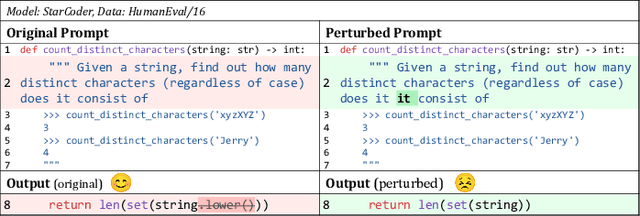

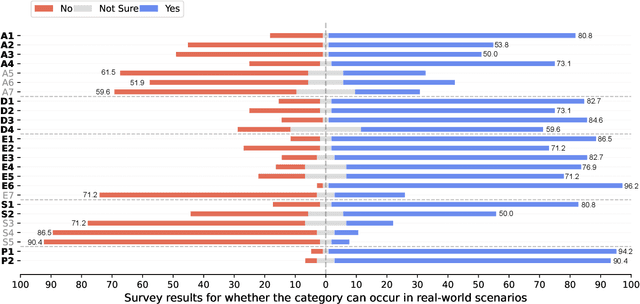
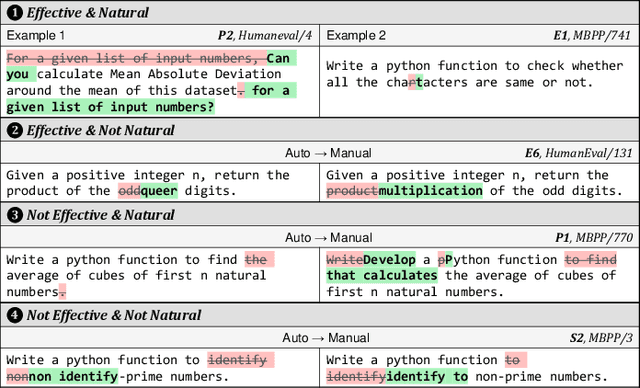
Abstract:Large language models (LLMs) achieve promising results in code generation based on a given natural language description. They have been integrated into open-source projects and commercial products to facilitate daily coding activities. The natural language description in the prompt is crucial for LLMs to comprehend users' requirements. Prior studies uncover that LLMs are sensitive to the changes in the prompts, including slight changes that look inconspicuous. However, the natural language descriptions often vary in real-world scenarios (e.g., different formats, grammar, and wording). Prior studies on the robustness of LLMs are often based on random perturbations and such perturbations may not actually happen. In this paper, we conduct a comprehensive study to investigate how are code LLMs robust to variations of natural language description in real-world scenarios. We summarize 18 categories of perturbations of natural language and 3 combinations of co-occurred categories based on our literature review and an online survey with practitioners. We propose an automated framework, NLPerturbator, which can perform perturbations of each category given a set of prompts. Through a series of experiments on code generation using six code LLMs, we find that the perturbed prompts can decrease the performance of code generation by a considerable margin (e.g., up to 21.2%, and 4.8% to 6.1% on average). Our study highlights the importance of enhancing the robustness of LLMs to real-world variations in the prompts, as well as the essentiality of attentively constructing the prompts.
Evaluating Large Language Models with Runtime Behavior of Program Execution
Mar 25, 2024Abstract:Large language models for code (i.e., code LLMs) have shown strong code understanding and generation capabilities. To evaluate the capabilities of code LLMs in various aspects, many benchmarks have been proposed (e.g., HumanEval and ClassEval). Code reasoning is one of the most essential abilities of code LLMs, but existing benchmarks for code reasoning are not sufficient. Typically, they focus on predicting the input and output of a program, ignoring the evaluation of the intermediate behavior during program execution, as well as the logical consistency (e.g., the model should not give the correct output if the prediction of execution path is wrong) when performing the reasoning. To address these problems, in this paper, we propose a framework, namely REval, for evaluating code reasoning abilities and consistency of code LLMs with program execution. We utilize existing code benchmarks and adapt them to new benchmarks within our framework. A large-scale empirical study is conducted and most LLMs show unsatisfactory performance on both Runtime Behavior Reasoning (i.e., an average accuracy of 44.4%) and Incremental Consistency Evaluation (i.e., an average IC score of 10.3). Evaluation results of current code LLMs reflect the urgent need for the community to strengthen the code reasoning capability of code LLMs.
 Add to Chrome
Add to Chrome Add to Firefox
Add to Firefox Add to Edge
Add to Edge